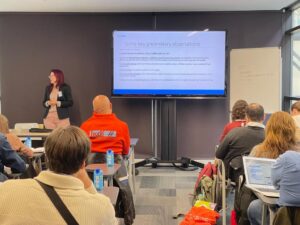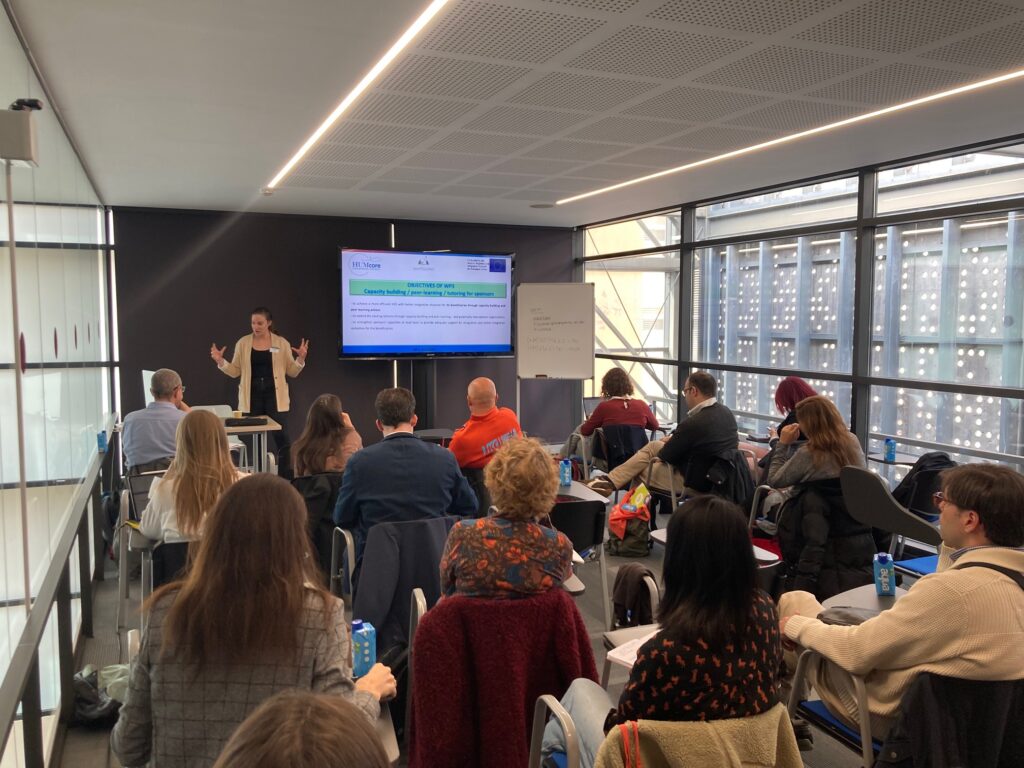The Blanquerna Observatory of Media, Religion and Culture participates in the research and communication of the programme that involves partners from new EU countries.
Representatives of the eleven entities participating in the HUMcore project have met at the Blanquerna Faculty of Communication and International Relations of the Ramon Llull University in the framework of the European project “HUMcore: Humanitarian Corridors“. The project aims to promote the inclusion of migrants in the social fabric of European countries “based on the principle that all people are an opportunity and not a problem for society”, as explained by the project coordinator and member of the Community of Sant’Egidio Italy, Lucio Barbetta.
The humanitarian corridors are a reception model promoted by the Sant’Egidio Community that seeks to receive migrants while guaranteeing their integration on arrival in Europe. It consists of several stages, namely, the signing of a protocol with public authorities, selection and preparation of beneficiaries, selection and training of private sponsors, safe and legal travel, ways of integration, inclusion in the social fabric of the receiving country. This system is already in operation in Italy, France, Belgium and Andorra, and since 2015 has managed to take in more than 5,200 Syrian, Afghan, Sudanese, Lebanese and Somali refugees, among other nationalities. Of the total number of people who have arrived through these corridors, 23% are minors.
The Blanquerna Observatory of Media, Religion and Culture, a centre of the Blanquerna Faculty of Communication and International Relations (URL), has been the host of this meeting and participates as a partner in the project. HUMcore studies humanitarian corridors from a multidisciplinary perspective, combining the work of academic institutions and civil society organisations, which work both in refugee camps and in host countries. The project, which began in December 2021 and will run until May 2024, receives funding from the European Union’s Asylum, Migration and Integration Fund (AMIF).
More than twenty people participated in the meeting, which took place on the 1st and 2nd of December, with the aim of sharing the work done by the consortium so far and establishing future lines of work. The eleven participating organisations come from nine different countries: Italy, Sweden, Spain, Portugal, France, Finland, Belgium, Poland and Bulgaria.
The programme included a meeting with journalists from different media to promote the dissemination and knowledge of the project. The journalists had the opportunity to interview experts from all the organisations that make up HUMcore.
In the context of this conference, Barbetta explained the workings of the corridors, a model of reception based on the role of civil entities that provides legal entry to the European Union for refugees. For Barbetta, the key to success is the integration of these people. The host organisations help them find work, school and housing, while the refugees undertake to learn the language of the country of destination and to increase their autonomy over time. 
